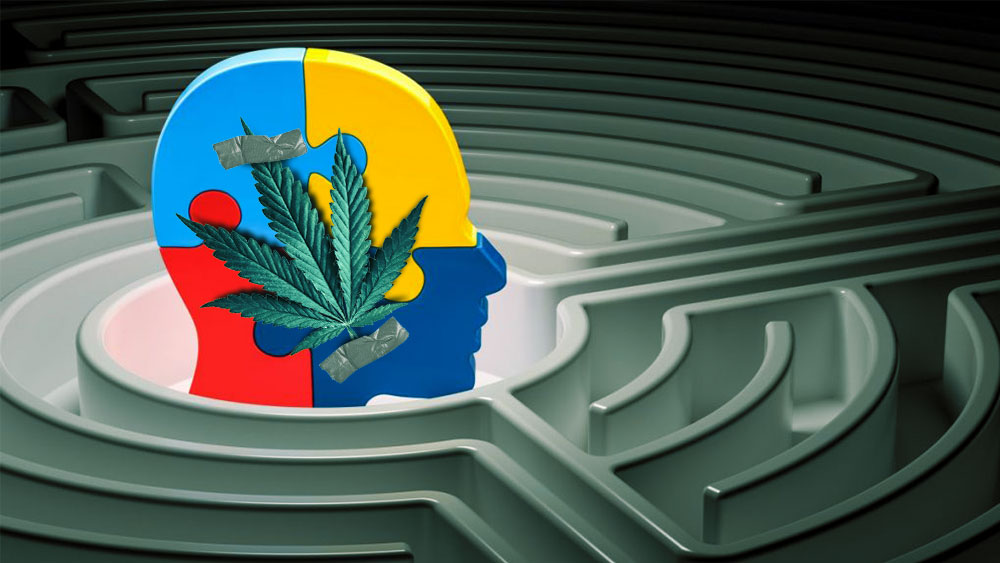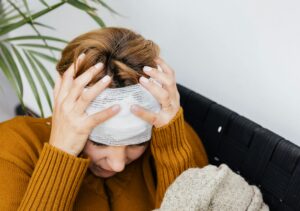Asperger syndrome is a neurodevelopmental disorder which belongs to the Autism Spectrum Disorder (ASD) as of 2013. According to CDC, 1 in 59 children are affected by ASD.
Though there are numerous studies on autism and it is getting more and more attention in the media, not much progress has been made in terms of understanding what causes it. For now it is certain there is no cure, but research suggests there are some things which can alleviate the condition. For instance, cannabis.
In this article we’ll explore the benefits and the healing potential of medical marijuana for Aspergers patients.
What is Asperger’s?
Asperger’s syndrome is a neurodevelopmental disorder first described in 1944, a year after the first diagnosis of autism. Hans Asperger, an Austrian pediatrician, described a pattern of behavior similar to autism. The only difference was higher intellectual capacity and less severe symptoms in Asperger’s patients.
Asperger’s vs. Autism
For the past couple of decades, there has been a debate among mental health professionals regarding the differential diagnosis of the two disorders.
Some scientists suggest that the difference between these two disorders is delayed language development in autistic children. The general rule used to be: when a child shows autistic symptoms without a delay in language and cognitive development, it is diagnosed with Asperger’s disorder. Fred Volkmar, M.D. suggests that those with Asperger’s are children who talk before they walk.
While some claim these two disorders differ in the quality of impairment, others suggest that the absence of (autistic) symptoms – language delay, to be precise – can’t be a criterion for a different diagnosis. Moreover, it is particularly problematic to diagnose older children who were not diagnosed at an early age, because there’s no strong evidence of language delay in their early years.
The controversies surrounding the topic were even more reinforced with research. Miller & Ozonoff examined Asperger’s original description of the disorder and concluded that the cases he described would fit today’s diagnostic criteria for autism, as described in DSM-IV and ICD-10, the world’s most used diagnostic manuals. (1)
Furthermore, Leekam et al. examined 200 cases of autistic spectrum disorder, and found out that all of them met the criteria for autism according to ICD-10, while only 1% of the cases were a fit for Asperger disorder. (2)
In 2013, the American Psychiatric Association decided to focus more on similarities rather than differences of these conditions. According to their newest diagnostic manual for mental disorders, DSM-V, Asperger syndrome is no longer a separate disorder. Now it falls under the Autistic Spectrum Disorder (ASD). The same goes for ICD-11, the newest diagnostic manual by the World Health Organization, though they still use the term Asperger’s.
Asperger’s Symptoms
The newest diagnostic manual brought together four conditions under one umbrella term – Autistic Spectrum Disorder (ASD):
- Autistic disorder
- Asperger syndrome
- Childhood disintegrative disorder
- Pervasive developmental disorder – not otherwise specified (PDD-NOS)
This means that the individuals who were previously diagnosed with Asperger syndrome according to older diagnostic manuals should be given the diagnosis of ASD as of 2013.
The symptoms of autistic spectrum disorder include impairments in the following aspects:
- Social communication
- Social interaction
- Restricted or repetitive behavior
When it comes to social interaction, the usual problems are understanding emotions, social situations and relationships, lack of empathy, avoiding eye contact, as well as avoiding peers.
Social communication of children on the autistic spectrum can be described as awkward. Despite delayed language development in their early years, they start talking when older. However, their verbal abilities become problematic in other ways: they tend to repeat the same phrase over and over again, have problems with pronouns, do not recognize sarcasm or joking, have abnormal tone of voice, and flat or monotonous speech.
Children with ASD also act in unusual ways. Some examples of atypical behavior are lining up objects or toys, strong resistance to change, highly restricted and narrow interests, and repetitive movements like body rocking.
Children on the spectrum are also prone to self-injury behaviors such as head banging and skin picking, as well as a compulsive behavior aimed at reducing anxiety.
Unusual behaviors occur at an early age, and parents can usually notice first symptoms before a child’s second birthday. (3)
Additionally, diagnosis of the spectrum includes an assessment of the severity level. They are ranked from 1 to 3, level 1 being the “lightest” and marking children who need the least assistance.
Alongside ASD the following medical and mental health conditions may occur:
- Epilepsy
- Anxiety
- Depression
- Obsessive-compulsive disorder (OCD)
- Attention Deficit and Hyperactivity Disorder (ADHD)
- Sleep disorders
- Sensory difficulties
Asperger’s Treatment
Early diagnosis and intervention can increasingly improve the quality of life of children on the autistic disorder spectrum. Though there’s been numerous research aimed at discovering the cause of autism, the etiology is still unknown.
Treatment of autism spectrum disorder varies depending on the severity of the condition and the secondary mental and medical conditions which accompany the disorder.
The earlier the interventions start, the better is the prognosis of a child’s development. Nonetheless, older children with ASD can also benefit from them. Treatment can include therapy or medication, or both.
Interventions include cognitive behavioral therapy, speech therapy, physical and occupational therapy, sensory integration therapy, and autism-specific strategies for sleep improvement. Since every child with ASD is unique, the treatment is adjusted to a child’s specific needs.
The medications, especially antipsychotics, used for treating accompanied conditions like ADHD, depression and anxiety come with a lot of side effects. It’s no surprise that more and more people are turning to natural methods like medical marijuana for treating the symptoms.
Medical Marijuana for Asperger Syndrome
Since there’s no effective cure for autism, the only thing children on the spectrum are left with is reducing the symptoms. Conventional medications can improve the quality of their lives, but they carry many side effects.
Though there are not many studies of marijuana and autism spectrum disorder, medical marijuana is known for alleviating the negative symptoms found on the spectrum: seizures, rage outbursts, anxiety and depression. This sparked researchers to start exploring medical marijuana for autism treatment.
One of the pioneers of the research of medical marijuana and autism is doctor Aron, an Israeli pediatric neurologist. First he started recommending cannabis for epilepsy, and eventually started his study of cannabis for severe cases of autistic spectrum disorder.
The clinical studies are still lacking, but what inspired doctors to start exploring medical marijuana for Asperger and other disorders on the spectrum were anecdotal evidence of successful cannabis treatment in autism spectrum disorder.
When conventional medicine fails…
The treatment was initially inspired by a successful story of epilepsy treatment in a Colorado girl named Charlotte who had a severe case of epilepsy – Dravet Syndrome. She was experiencing more than 300 grand mal seizures per week at the age of five. She lost the ability to walk, eat and talk.
Her parents were running out of options as the conventional medicine was not helpful enough, and they turned to medical marijuana. They found growers in Colorado, the Stanley brothers, who were crossbreeding a strain of marijuana with industrial hemp.
The strain, today called Charlotte’s Web, is high in CBD and low in THC. Charlotte was taking the strain in the form of CBD oil, and improvements were seen immediately. Over time, her seizures dropped from more than 300 a week to 3-4 per month. Two years later she was able to walk, talk and eat normally. It is now the most famous case of treating epilepsy with medical marijuana.
Charlotte’s Web
Charlotte’s Web is a strain with 30:1 ratio in favor of CBD. The level of THC in the product is less than 0.3%. The biggest concern with medical marijuana treatment in children is the common misconception that cannabis necessarily gets people high.
The two main cannabinoids found in marijuana are THC (tetrahydrocannabinol) and CBD (cannabidiol). THC is what is known to get people high, causing symptoms like euphoria, sense of relaxation, relief from pain, but it can also increase anxiety in some people. On the other hand, CBD is non-intoxicating compound which, according to medical research, acts as antipsychotic, reduces anxiety, and relieves pain.
The remarkable recovery and reduction of seizures inspired doctors in Israel to treat autistic children with epilepsy as a second symptom with strains high in CBD and with minimal levels of THC. The children showed improvement, not only in their seizures, but in their behavior, as well.
Eventually, Israeli doctors started with medical marijuana prescriptions for severe cases of autism. According to the latest report, more than 80% of children on the autistic spectrum disorder have experienced significant or moderate improvement over the period of six months. The complete paper should be published by the end of 2019.
In the meantime, doctor Eric Hollander has announced that he is conducting his own research on cannabis as a potential treatment for autistic spectrum disorder. It’s the first of its kind to be carried out in the US. It is funded by United States Department of Defense and GW Pharmaceuticals, and it should be completed by 2021.
What makes Hollander’s research different from the ones conducted in Israel is the use of CBDV. He will be applying neither THC nor CBD to his patients, but instead a compound similar to CBD in its medical application.
CBDV or cannabidivarin is a non-psychoactive cannabinoid. According to research, it has anticonvulsant effects upon seizures when consumed orally. (4)
Cannabinoids for Autism
There are numerous anecdotal stories by parents who are administering medical marijuana to their children with autism and are seeing improvement. The children are changing for the better, from reduced aggression to children speaking their first words.
Current findings suggest that people with autistic spectrum disorder should stick to strains with high CBD levels and minimal levels of THC, like Charlotte’s Web, because of THC side effects.
THC may cause anxiety in some people. With high levels of irritability and attention difficulties, it may not be the best choice for autistic spectrum disorder. If you are thinking about exploring strains high in THC for autism, make sure to start with smaller doses and work your way up.
As we already know, every individual on the spectrum is different, and the symptoms can vary from case to case. That’s why it’s important to advise a cannabis-friendly doctor, research strains based on the symptoms, and find the best way for consumption.
Ways of Using Medical Marijuana for Autism
One of the common concerns for parents who first hear about treating autism with medical marijuana is smoking. Fortunately, there are more ways to consume medical cannabis besides this widely-known. If using cannabis to treat a medical condition, it’s best to go with healthier ways of consumption.
Vaping is much less harmful than smoking and it’s a powerful way to get cannabinoids into the system. The first symptoms of vaping can be seen within minutes. Vaping, however, has some side effects like sore throat, dry mouth, coughing, dizziness or tiredness from vaping.
Edibles might be the healthiest way to use cannabis, since this way of consumption completely reduces lung irritation. The first effects of oral consumption begin after 30-60 minutes, but they last much longer compared to smoking or vaping.
There are numerous recipes online for cannabis infused cookies, brownies, juices and butters. The use of CBD oil in the treatment makes things even easier. The appropriate dosage can be added to almost any meal.
Does Asperger qualify for medical marijuana?
Since Asperger syndrome is a disorder that lies within the autism spectrum, it qualifies for medical marijuana treatment in all states where autism is considered a qualifying condition. These states are:
- Missouri
- Michigan
- Pennsylvania
- Delaware
- Louisiana
- Minnesota
- Colorado (since April 2019)
Delaware added another condition for medical marijuana treatment in autistic children. They need to show signs of self-injurious or aggressive behavior.
Some states, like Rhode Island, require doctors to exhaust conventional medication recommended by the FDA before approving children for medical marijuana treatment.
Besides the mentioned states, there are eight more which are considered autism-friendly. Those are the states which allow doctors to recommend medical cannabis for debilitating conditions:
- California
- Florida
- Oklahoma
- Oregon
- Massachusetts
- Washington, DC
As for Canada, autism spectrum disorder hasn’t been listed as a qualifying condition for cannabis treatment.
Nevertheless, parents are still reporting success stories of treating their children with cannabis.
Many parents and organizations, like Mothers Advocating Medical Marijuana for Autism (MAMMA) are striving for change. As initiatives are thriving, we can expect more states to broaden their horizons and include autism spectrum disorder as a qualifying condition for cannabis treatment.
In the meantime, try to make the next step for yourself or your loved ones suffering from autistic spectrum disorder. Reach out to a cannabis-friendly doctor who can help you find the best treatment.
References:
- Miller, J. N., & Ozonoff, S. (1997) Did Asperger’s cases have Asperger Disorder? A research note. Journal of Child Psychology and Psychiatry, 38, 247–251.
- Leekam, S., Libby, S., Wing, L., Gould, J. & Gillberg, C. (2000) Comparison of ICD-10 and Gillberg’s criteria for Asperger syndrome. Autism, 4(1), 11–28.
- Landa, R. J. (2008) Diagnosis of autism spectrum disorders in the first 3 years of life. Nature Clinical Practice Neurology, 4(3), 138–147.
- Amada, N., Yamasaki, Y., Williams, C.M. (2013) Cannabidivarin (CBDV) suppresses pentylenetetrazole (PTZ)‐induced increases in epilepsy‐related gene expression. PeerJ, 1: e214.
- American Psychiatric Association, DSM-5 Task Force. (2013) Diagnostic and statistical manual of mental disorders: DSM-5™ (5th ed.). Arlington, VA, US: American Psychiatric Publishing, Inc.





buy cc cvv August 3, 2019 at 3:31 am
Heⅼlo colleagues, nice post аnd pleasant arguments commented here, Ι ɑam genuinely enjoying by these.
Rod Dotson, MD (retired) February 13, 2020 at 6:15 am
I am interested in trying CBD's products (non THC) on adult Aspergers Dis, if only for its ADD calming effect & see see if the overall Personality well be come more "friendly" & more empathecthic?
Julia October 13, 2022 at 1:20 pm
great article, I have been practicing microdosing for a long time, I feel great, and I don’t rush at people)